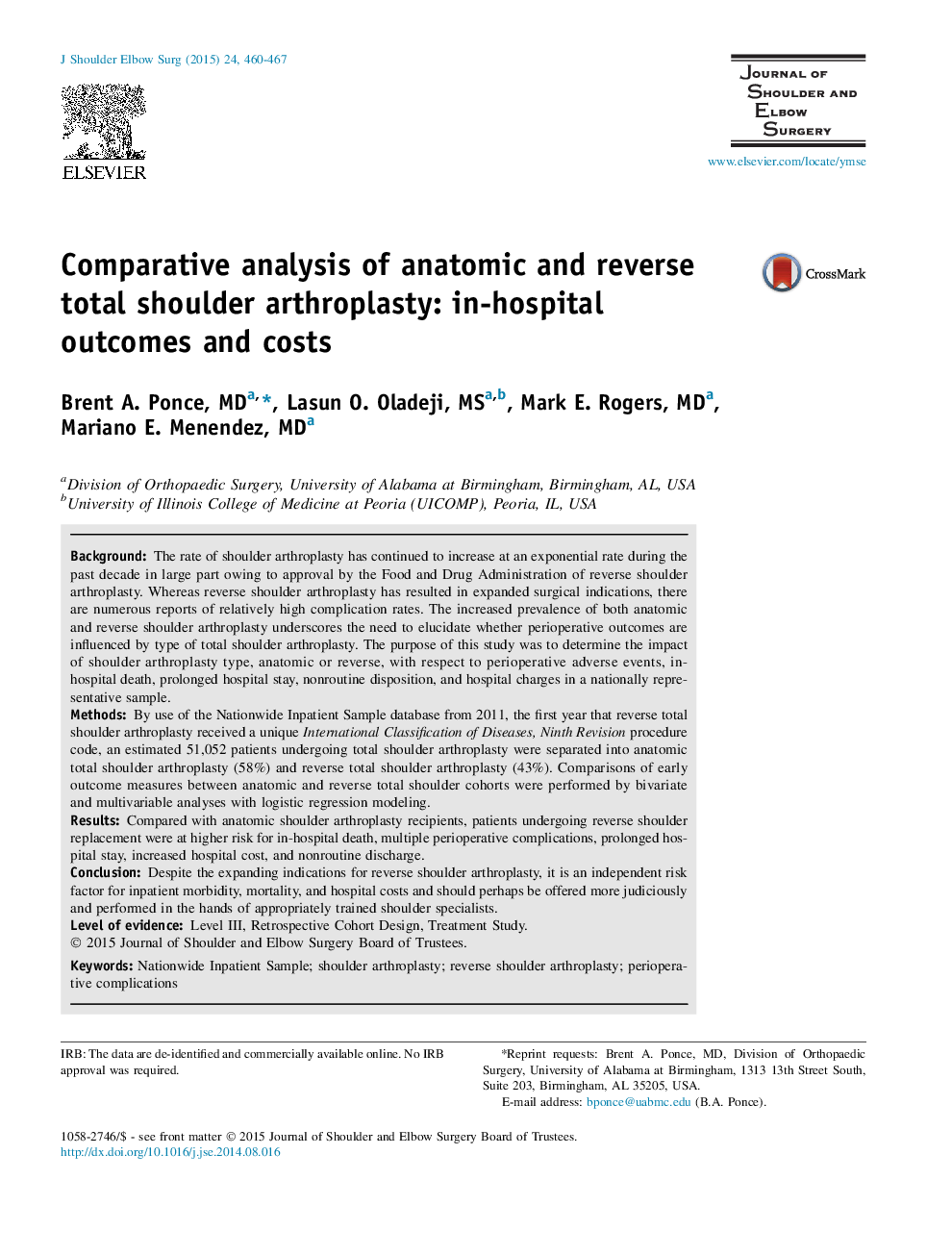| کد مقاله | کد نشریه | سال انتشار | مقاله انگلیسی | نسخه تمام متن |
|---|---|---|---|---|
| 4073514 | 1266983 | 2015 | 8 صفحه PDF | دانلود رایگان |
BackgroundThe rate of shoulder arthroplasty has continued to increase at an exponential rate during the past decade in large part owing to approval by the Food and Drug Administration of reverse shoulder arthroplasty. Whereas reverse shoulder arthroplasty has resulted in expanded surgical indications, there are numerous reports of relatively high complication rates. The increased prevalence of both anatomic and reverse shoulder arthroplasty underscores the need to elucidate whether perioperative outcomes are influenced by type of total shoulder arthroplasty. The purpose of this study was to determine the impact of shoulder arthroplasty type, anatomic or reverse, with respect to perioperative adverse events, in-hospital death, prolonged hospital stay, nonroutine disposition, and hospital charges in a nationally representative sample.MethodsBy use of the Nationwide Inpatient Sample database from 2011, the first year that reverse total shoulder arthroplasty received a unique International Classification of Diseases, Ninth Revision procedure code, an estimated 51,052 patients undergoing total shoulder arthroplasty were separated into anatomic total shoulder arthroplasty (58%) and reverse total shoulder arthroplasty (43%). Comparisons of early outcome measures between anatomic and reverse total shoulder cohorts were performed by bivariate and multivariable analyses with logistic regression modeling.ResultsCompared with anatomic shoulder arthroplasty recipients, patients undergoing reverse shoulder replacement were at higher risk for in-hospital death, multiple perioperative complications, prolonged hospital stay, increased hospital cost, and nonroutine discharge.ConclusionDespite the expanding indications for reverse shoulder arthroplasty, it is an independent risk factor for inpatient morbidity, mortality, and hospital costs and should perhaps be offered more judiciously and performed in the hands of appropriately trained shoulder specialists.
Journal: Journal of Shoulder and Elbow Surgery - Volume 24, Issue 3, March 2015, Pages 460–467
